
Finke Gorge National Park: A Natural Wonderland
Discover the breathtaking beauty of Finke Gorge National Park, where ancient landscapes and rich Indigenous culture come together in the heart of Australia.
Finke Gorge National Park is a breathtaking oasis of natural beauty located near Alice Springs, Australia. This stunning national park is renowned for its dramatic landscapes, ancient rock formations, and the iconic Finke River, often considered one of the oldest rivers in the world. Visitors can explore diverse walking trails, witness a variety of unique wildlife, and immerse themselves in the rich Indigenous culture that permeates the area. Perfect for adventure seekers and nature lovers alike, Finke Gorge promises a memorable experience amidst the rugged beauty of the Australian outback.
A brief summary to Finke Gorge National Park
- 5Q7JRRJ8+HM, Alice Springs, Northern Territory, 0872, AU
- +61889567401
- Visit website
Local tips
- Visit during the cooler months (May to September) for the best weather conditions.
- Bring plenty of water and snacks, as facilities within the park are limited.
- Consider joining a guided tour to gain insights into the park's cultural and natural history.
- Always check the weather and road conditions before your visit, as heavy rains can affect accessibility.
- Take your camera; the views, especially at sunrise and sunset, are truly spectacular!
Getting There
-
Car
To reach Finke Gorge National Park from Litchfield National Park by car, start by exiting Litchfield National Park via the Batchelor Road, heading south towards the town of Batchelor. Once you reach Batchelor, take the Stuart Highway (National Route 87) heading south towards Alice Springs. Continue on the Stuart Highway for about 180 kilometers until you reach the turn-off for Finke Gorge National Park. The entrance to the park is approximately 30 kilometers from the highway. Please note that the last section of the road may require a 4WD vehicle, especially during the wet season. Ensure you have enough fuel, as facilities are limited once you leave Batchelor.
-
Public Transportation
If you are relying on public transportation, you may first need to take a bus from Litchfield National Park to Alice Springs. Check local bus schedules, as they may not operate daily. Once you arrive in Alice Springs, you can hire a car or join a tour that includes Finke Gorge National Park as part of the itinerary. Be sure to confirm whether the tour includes transportation to and from the park, as well as any entrance fees that might apply.
-
Guided Tour
Consider booking a guided tour that specifically includes Finke Gorge National Park. Many tour operators in Alice Springs offer excursions that cover the park's highlights. These tours typically provide transportation from Alice Springs, include a knowledgeable guide, and cover the necessary entrance fees. This option is ideal for those who prefer not to drive themselves and want to learn more about the park's unique landscapes and history.
Discover more about Finke Gorge National Park
Iconic landmarks you can’t miss
My Red Centre
51.4 km
Discover Australia's Red Centre with My Red Centre, your ultimate tour operator for breathtaking landscapes and rich cultural experiences.

Mount Sonder
69.8 km
Explore Mount Sonder, a stunning mountain peak in Australia's Northern Territory, renowned for its breathtaking views and exhilarating hiking trails.

Macdonnell Ranges
71.8 km
Discover the awe-inspiring beauty of the Macdonnell Ranges, where adventure meets rich Aboriginal culture in a breathtaking mountain landscape.
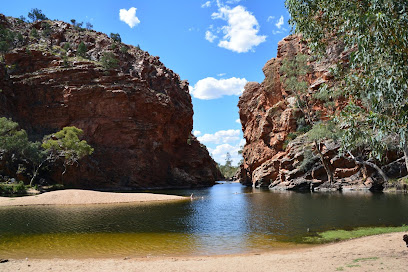
Brinkley Bluff
77.7 km
Discover the breathtaking views and adventurous hiking trails at Brinkley Bluff in Northern Territory, Australia, a must-visit destination for nature lovers.
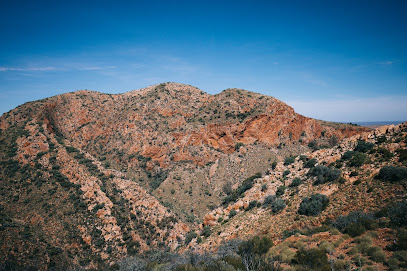
Rainbow Valley Conservation Reserve
88.0 km
Explore the stunning Rainbow Valley Conservation Reserve, where vibrant sandstone cliffs and diverse wildlife create an unforgettable natural experience in the Northern Territory.

Unmissable attractions to see
Palm Valley
18.2 km
Explore Palm Valley in Finke Gorge National Park, a stunning oasis of unique palm trees and breathtaking landscapes in the heart of Australia's outback.

Hermannsburg Historic Precinct
25.3 km
Explore the Hermannsburg Historic Precinct for a unique insight into Aboriginal culture and the pioneering history of Australia's Northern Territory.

Neil Hargrave Lookout
47.4 km
Discover the stunning vistas and natural beauty at Neil Hargrave Lookout, a must-visit attraction in the Northern Territory showcasing the Australian outback.
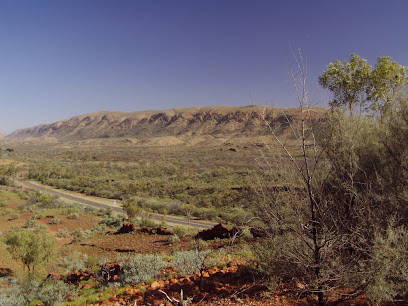
Ochre Pits
48.5 km
Explore the Ochre Pits in the Northern Territory, a vibrant and culturally significant natural wonder showcasing Australia's artistic heritage.
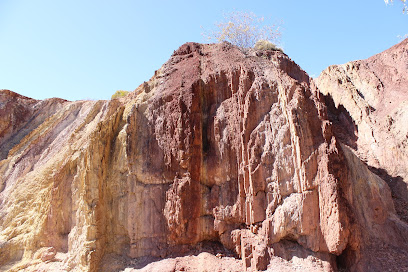
Serpentine Gorge
49.3 km
Experience the breathtaking landscapes and tranquil waters of Serpentine Gorge, a stunning natural oasis in Australia's Northern Territory.
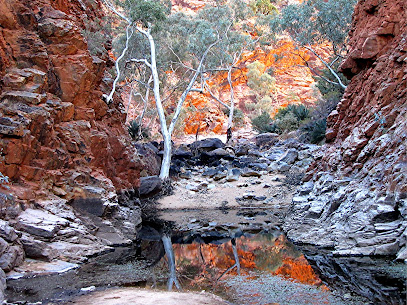
Ellery Creek Big Hole
50.7 km
Discover the stunning beauty of Ellery Creek Big Hole, a natural swimming oasis surrounded by dramatic cliffs in the heart of the Australian Outback.

Glen Helen Organ Pipes
54.2 km
Discover the stunning Glen Helen Organ Pipes in West MacDonnell National Park, a natural wonder featuring unique rock formations and breathtaking landscapes.
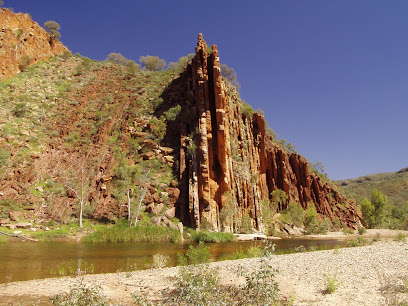
Point Howard Lookout
54.5 km
Discover the stunning vistas and tranquil atmosphere at Point Howard Lookout, a must-see destination in Namatjira, Northern Territory.
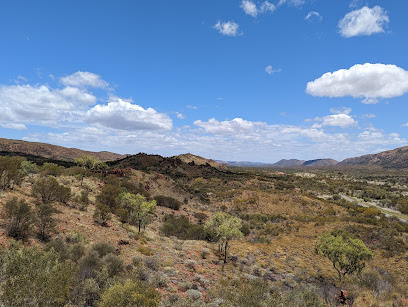
Hendrick Gerrit Guth Grave
55.0 km
Explore the Hendrick Gerrit Guth Grave, a tranquil memorial set against the stunning backdrop of Ormiston Gorge in Australia's Northern Territory.
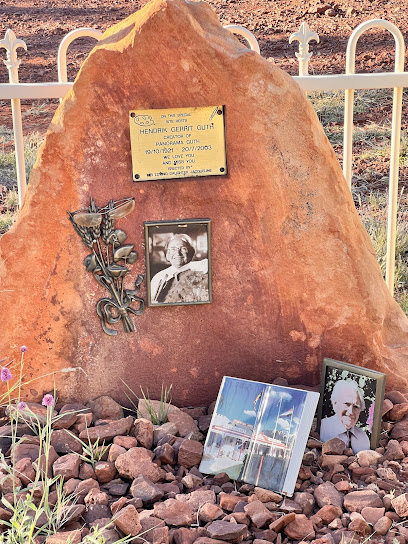
Glen Helen Gorge
55.3 km
Discover the breathtaking beauty of Glen Helen Gorge, a natural park with stunning landscapes and rich Aboriginal culture in Australia's Northern Territory.
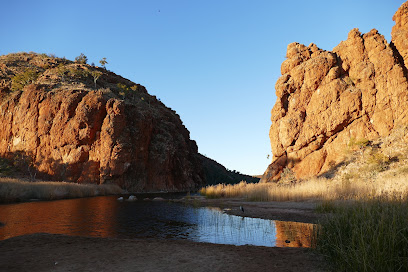
Henbury Meteorites Conservation Reserve
56.0 km
Discover the cosmic history and breathtaking landscapes at Henbury Meteorites Conservation Reserve, a must-see natural wonder in the Northern Territory.
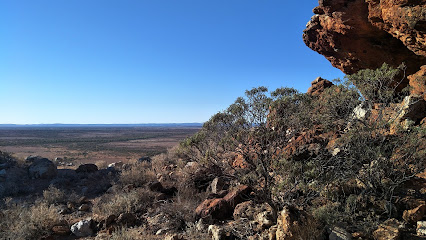
Mount Sonder Lookout
56.7 km
Discover the stunning vistas of Mount Sonder Lookout, a breathtaking natural attraction in Australia's Northern Territory, perfect for adventure and relaxation.
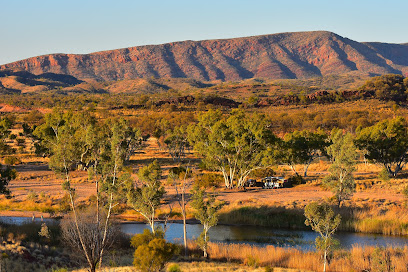
Owen Springs Reserve
58.9 km
Discover the natural beauty and cultural significance of Owen Springs Reserve, a premier park near Alice Springs perfect for outdoor adventures and wildlife watching.
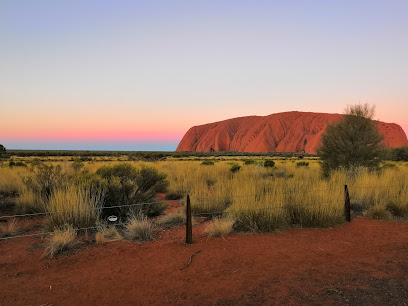
Ormiston Gorge
60.8 km
Explore the breathtaking beauty of Ormiston Gorge, a natural wonder in the heart of Australia's Northern Territory, offering stunning landscapes and rich wildlife.
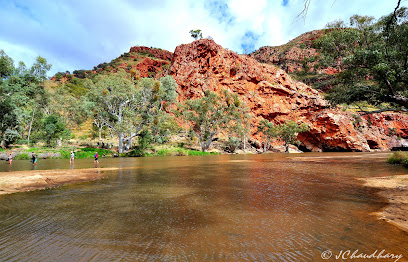
Gosses Bluff Crater
64.7 km
Explore the breathtaking Gosses Bluff Crater, an ancient meteorite impact site rich in Indigenous culture and stunning landscapes in Australia's Northern Territory.

Markets, malls and hidden boutiques
Wallace Rockhole Shop and Art Centre
27.8 km
Experience the unique blend of Aboriginal art and local culture at Wallace Rockhole Shop and Art Centre, a must-visit destination in the Northern Territory.

Ormiston Gorge Kiosk
60.3 km
Experience Ormiston Gorge Kiosk: A Refreshing Retreat in the Heart of Australia's Natural Wonders.




